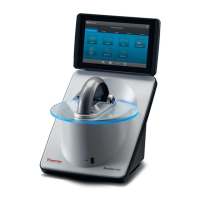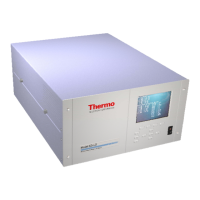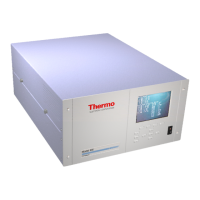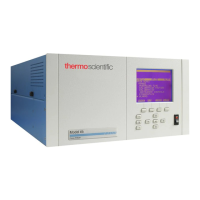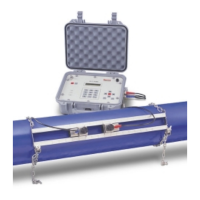Orion Benchtop pH/ISE Meter Instruction Manual
Determining Isopotential Points
123
Appendix G
Determining Isopotential Points
To take advantage of the temperature compensation feature for
concentration measurements in the Orion 920Aplus, it is necessary to
experimentally determine the isopotential point of the electrode in use.
The slope of all electrodes changes with temperature. This is due in fact to
the slope term, S, in the Nernst equation. The slope is actually 2.3RT/nF,
where R and F are constants, n is the charge on the measured species, and
T is the temperature in degrees Kelvin. Examples of calibration curves at
varying temperatures are shown in Figure below.
These curves intersect at the isopotential point, which is the concentration
at which the potential of the electrode does not vary with temperature. If
the isopotential point is known or can be measured experimentally, and if
the meter, such as the Orion 920Aplus, has the means of adjusting the
isopotential point, temperature compensation for an ion selective electrode
is possible. Temperature compensation can be performed for one and two
point calibrations.
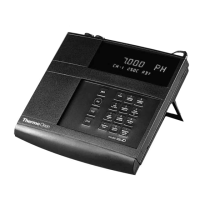
